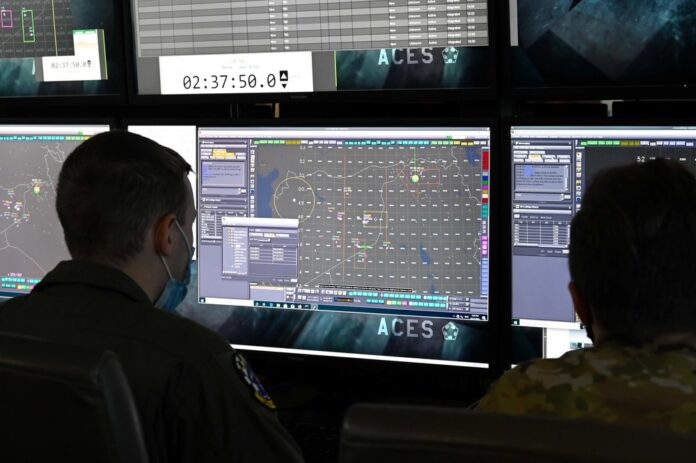The U.S. military strives to be prepared to fight the next war, not the last war. There are many aspects of such preparedness, not least of which is information technology.
For starters, today’s military domains include not just land, sea, air, and space, but also cyberspace. What’s more, as we confront more near-peer adversaries, battlespace dominance will involve intelligent use of digital tools at least as much as weapons systems.
One challenge, though, is that different military stakeholders require different technology solutions. Enterprise data, mission data, and tactical data need to be consumed by different users in different ways.
The solution is a unified collaboration platform that brings together technology tools, data, and communication in a secure, user-friendly way. A collaboration platform can make decision-makers more accurate and warfighters more responsive to fast-changing conditions.
Still, military leaders can understandably be skeptical of newer solutions and platforms. After all, any technology used by the military needs to be proven, secure, and scalable.
Recognizing three essential points can help decision-makers overcome the political and technical barriers to deploying a unified collaboration platform. First, supplying teams with technology tools that eliminate bottlenecks is crucial to mission success. Second, younger personnel the military needs to attract and retain communicate in a fundamentally different and highly collaborative manner. And third, an effective collaboration platform can be deployed in a way that ensures military-grade security.
Let’s start with technology tools. Any mission involves three types of information: enterprise data for running branch operations, mission data for strategic planning, and tactical data for decision-making and action in the battlespace. The ability to aggregate these data and collaborate in one place offers unmatched decision advantage.
Users at the enterprise level are accustomed to traditional technology such as DoD365, the military’s implementation of Microsoft’s personal-productivity suite. Some leaders seem to believe such tools are adequate for all users, and many large government systems integrators, staffed by retired military personnel, take the same mindset. But these solutions were developed decades ago. They’re essentially designed for the last war.
Missions involve a large number of technical users, from application developers to warfighters. Forcing them to use outmoded technology makes them less productive and collaborative, and it hinders their ability to make fast, informed decisions. They require specialized software and communications capabilities, such as real-time chat, that they’re accustomed to using in their private-sector lives and that make them more effective.
What’s key is for this functionality to be integrated, and that’s where a collaboration platform comes in. The technology exists today to bring together these capabilities seamlessly in a unified environment. That way, all types of users can benefit from the tools they need while still executing in the same context and as a single team.
It’s also important to recognize that many of today’s military leaders are Gen Xers, born between 1965 and 1980. For them, email was groundbreaking. But email is no longer fast, easy to organize, or context-sensitive enough for the way personnel now interact.
Many of the military’s technical users belong to Gen Z, those born in the mid-1990s and later. For these so-called Zoomers, a mobile device is almost an extension of their body. They communicate, and they organize and consume data, in radically new ways.
If military leaders want to recruit and retain the technical talent that will help advance their missions, they need to equip them with the devices, apps, and instant-message functionality they’ve been using their entire lives. They need to demonstrate that the armed forces are innovative when it comes to technology – or lose recruits to private-sector companies that offer them the innovation they value.
With a collaboration platform, it’s simple to take advantage of the modern functionality that will attract and retain digital-native, Gen Z personnel. And make no mistake: If users aren’t happy with the tools they’re given, they’ll find ways to go around them – typically in unsecure, noncompliant ways.
But an effective, modern collaboration platform can provide the military-grade cyber protections missions require. Such a solution should operate securely and privately in either an on-premises data center or a private cloud. It should also be deployable in the kind of “air-gapped” environments used by the DoD, with fine-grained customizations for permissions and access controls. That gives military organizations complete data sovereignty and control to meet the strictest compliance requirements.
These collaboration technologies have been tested, proven, and are already in use by military “software factories” such as Platform One, the innovation hub of the U.S. Air Force. Such software factories can also assist with getting the technology on an organization’s program of record and help drive adoption.
A unified collaboration platform can help ensure the military isn’t trying to fight the next war with the last war’s information technology. It can bring together all stakeholders in a single digital location to improve understanding, enable informed decision-making, and drive the right action at the right time.
The views expressed here are the writer’s and are not necessarily endorsed by Homeland Security Today, which welcomes a broad range of viewpoints in support of securing our homeland. To submit a piece for consideration, email [email protected].




